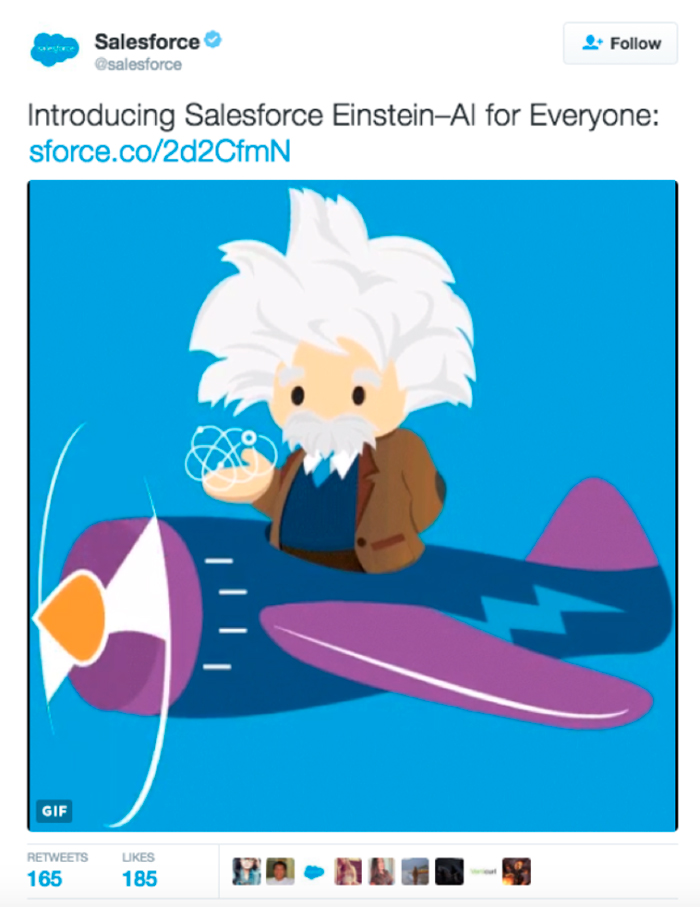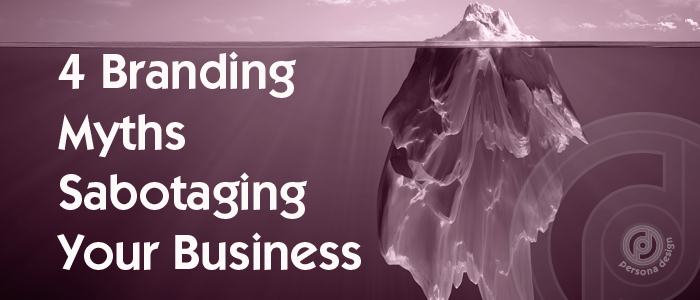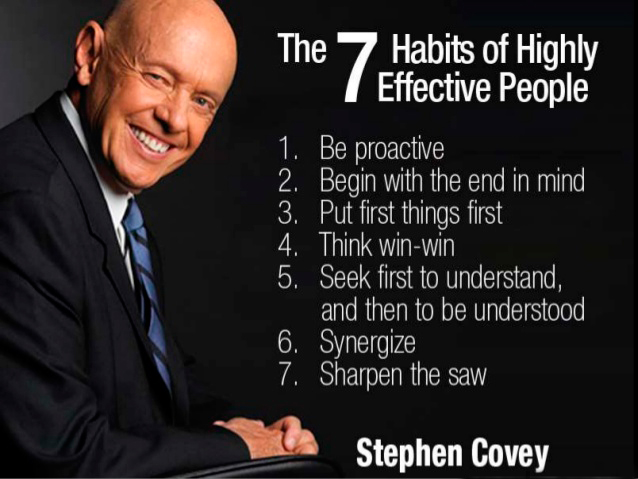4 Myths About Branding That Will Forever Change Your Marketing Mindset
Because there is so much misinformation and misunderstanding around what branding and brand strategy is, and isn’t for that matter, we’re scrutinising the most common myths in this article so you can re-orientate your thinking to take your business to the next level and increase your profits.
In truth, there’s a lot more to branding then logos, websites and brochures because branding strategy is not actually design or marketing. It provides the direction for marketing and design. In fact, it’s the bedrock underpinning your whole business so read on as we blast away some of those myths for you right now.
Myth#1 Create an Attractive Name and Design a Nice Logo to Solve your Branding Problems!
A common misconception relates to brand names and logos, particularly amongst smaller businesses. When making brand naming decisions, it’s not unusual to find potential clients or Branding Accelerator Masterclass participants confusing their logo and name with their brand strategy.
The basic tenets for decision making around a brand name are to set clear and consistent objectives with predetermined criteria for the selection process and to be unwavering in benchmarking potential names by those criteria.
In other words, naming needs to take its direction from your brand strategy. Your name and logo are merely a visual identifier, the signature at the end of an email or letter so people know who the correspondence is from but it’s not your brand alone.
Your brand strategy is the process of mapping out and codifying your brand so you can identify what makes your brand different, distinctive, credible, trustworthy and highly likeable in compelling customer terms — which in turn provides the direction for naming, logo design, websites, marketing campaigns and so forth.
Related: Why Do I Need A Brand? I’ve Got A Great Product and a Logo
In 1978, one of the most iconic brands, previously known as Blue Ribbon Sports, decided to enter the sports shoe category. Initially, they operated as a distributor for a Japanese shoe company called Onitsuka Tiger but believed their current name was not going to be appealing to the general public.

Formerly the founder Phil Knight wanted to call it Dimension Six. However, fortuitously he was persuaded against it by his first employee who ironically read an article in an In-Flight magazine about how successful brand names either have one or two syllables while using letters that sounded like Z or K. If you interested in learning more about Nike’s history, check out the video below.
After researching potential names, the team narrowed it down to three options and chose a name that resonated best with the sports shoe category. Although they weren’t cognizant of this at first, it was one of those happy accidents that ended up congruently fitting with their entire communications strategy in the future.
Nike was unveiled to the world because it refers to the Greek Goddess of victory, an association many athletes hold dear to their hearts. Do you think Dimension Six would have had a similar impact? Probably not, and you definitely wouldn’t have seen the iconic “Just Do It” slogan in any of their brand stories, that’s for sure.
For more information on brand naming, check out this Ted talk by Jonathan Bell on his approach:
After reading this, you might mistakenly think that Nike’s success propagates the myth that conjuring up a good name is a solution to successful brand building on its own. Well, if that were true and it was that easy there would be a lot of other Nikes in the market. The reality is, a good name is a key part of your brand persona but on its own it’s not enough to build a powerhouse brand. It co-exists with your brand as part of your branding strategy. Nike were very fortunate as an example of a naming anomoly because that accidental choice has worked so successfully — in 99% of cases it doesn’t!
Strategy and creativity go hand in hand, Nike has had, and continues to have, many elements at play that have influenced its success, such as their product, category and the influential team and visionaries behind the brand. The name has influenced a lot of their creative decisions because of its symbolic meaning but the reality is, their continued success is due to the phenomenal brand strategy underpinning the brand because it provides the direction for all their stunning creativity and marketing campaigns.
Myth #2 Your Branding Design Stem’s From What you do!
What do all successful companies and powerhouse brands have in common? They attract strong investors, ideal customers, and high-performing talent alike. Why? Not because they named themselves Apple or because of what they do or sell.
The sole intention or purpose of a business is not, and cannot be, just about making money because people are fundamentally driven by something bigger than themselves, by the greater good and contribution — by a greater purpose.
As leaders, one of our most important jobs is to connect our people to their greater purpose because when an authentic purpose and vision permeates business and brand strategy, coupled with decision-making, the personal and collective good become one and the whole organisation performs at a much higher level — and you attract and retain a lot more of your ideal customers.
Related: How Leaders Drive Profitability With a Strong Brand Vision Statement
Vincent Perriard explains in the video below on how you can avoid an existential crisis amongst your employees and and build a more compelling brand that is easily understood.

In our digital age, all B2B or B2C organisations must have a highly customer-centric mindset underpinned by a really compelling purpose to succeed long-term and thrive. However, for this to occur every stakeholder internally and externally, from leadership to general staff, customers and investors must connect with a central authentic brand tenet, purpose and vision which all are irresistibly pulled towards.
Research and consistent high performance, culture and profits prove that customers are psychologically more attracted to a brand that has a strong link between core brand values and consistently positive customer experiences while also contributing to the greater good. The products and services you offer must be embodied in a brand ethos, driven from your brand strategy, that is very compelling emotionally and rationally and lived authentically internally and externally in everything you do — all of which initially stems from the mapping out and codification of your brand in the form of your brand strategy.
Related: How to Use Brand Values to Drive Unwavering Customer Trust and Commitment
Brigid McMullen, Managing Director of The Workroom, stated how “Putting the brand at the heart of your business takes a big vision and ambition. You need to stand for something above and beyond transactional relationships.”[1]If you want to be top of mind you must put your customer first, regardless of whether your organisation is B2B or B2C. If you compromise your principles it hurts your brand promise, and you set a harmful precedent that could be catastrophic to future success. More often than not, the companies that succeed have their integrity firmly intact because the steps taken to implement a brand strategy were methodical and thoughtful. If you hope to build trust, every stakeholder must exhibit a similar understanding of what drives your company.
We know that sometimes it’s a struggle to develop your brand strategy, particularly if it’s not your core skill set and you want to achieve the greatest return on investment, so we’ve developed three different ways of working with us to help you build your brand successfully. So depending on your preferences:
- We can build your brand for you – find out more here or get in touch [email protected] or ring +353 1 8322724
- Empower you to build your brand – check out the Persona Brand Building Blueprint™ Mastermind here. This is a two-day intensive where you work on your brand with us codifying and mapping out your brand strategy for business growth. Alternatively, join our half-day Branding Accelerator Masterclass for a fast-injection of brand building essentials
- Want a DIY solution? Check out our ‘How to Audit Your Brand’ eprogramme here and How to Build a Brand eprogramme here
Get in touch because we lead you through your brand building journey, whether you’re a well-established business hungry to seriously accelerate your expansion and take things to the next level or in the early years of rapid growth spurts.
- Schedule an appointment — we can meet in person or online
- Allow us to create a customised plan for you
- Let’s implement the plan together
- Contact us [email protected] or ring +353 1 8322724 (GMT Dublin/London time 9:00 – 17:30 weekdays)
Brand Building Foundations and Strategy
BEFORE Design, Communications or Marketing Activities
| FIRST A brand must evaluate, identify, codify, map out and articulate what it stands for – to become highly visible, credible, trusted, and much liked so it can command a premium and give its customers a compelling reason to buy. The elements listed below are the roadmap for every brand because the outputs provide the direction for communications, design and marketing activities. | SECOND Design, visual content, text, campaigns and marketing activities are created to communicate the brand’s offering and attract its ideal customers to close the sale. They all take their direction from the outputs in the first column. The visual language expressing the brand in meaningful context and marketing campaigns can only be created once the factors that make it different, distinctive, memorable and likeable have been identified, codified and developed in stage one as listed. |
| Purpose | Brand Naming, Taglines |
| Vision | Visual Identity |
| Mission | Logo Design |
| Values | Signature Colour Palette |
| Positioning | Website/Social Platforms |
| Promise | Copywriting Style and Language |
| Product/Service Structures | Graphic Elements |
| Purchaser Personas | Photography/Illustration Style |
| Signature Language/Tone-of-Voice | Video and Music Style |
| Personality | Brand Collateral e.g. Packaging Design |
| Story | Advertising |
| Brand Culture | Brand Sales Scripts |
| Customer Journey and Experience | Marketing Campaigns |
| Brand Profile Distillation | Brand Guide |
| Management Brand Induction and Leadership Development | Staff Brand Induction and Training, Brand Champion Training, Culture Development |
Myth #3. Design Powerful Visual Branding Symbols to Win Customers
To an extent some of this belief is true but not in its entirety when taken out of context because strong symbolism and visual assets take their direction from your brand strategy. They are not effective when created in an isolated vacuum of subjective design.
According to Warc, brand leaders and custodians need to be mindful of their brand’s very essence when designing their brand identity. The companies that succeed ensure their design is resilient and relevant enough to stand the test of time and evolve naturally with careful nurturing and evolutive management. As people start feeling an emotional bond with your brand, your visuals must not only support them, but be fully congruent with your brand strategy. Having, “powerful visual symbols can become highly recognizable brand properties, able to absorb multiple meanings. Brand Strategy is thus coded into the image itself and can sustain interpretations by different stakeholders more easily.”
Related: Use Psychology in Your Brand Strategy to Create Irresistible Brand Experiences and Increase Sales
It’s essential you don’t confuse this approach and think it’s the most influential part of your brand strategy. There is a lot more to it than stunning creative visuals because if the beautiful imagery doesn’t speak from the heart of your brand strategy — your brand purpose, vision, mission, promise, personality and values, it still won’t deliver the commercial imperative.
All stakeholders involved need to understand and resonate with the collective vision and purpose of your brand to deliver a successful outcome. The image alone is a byproduct of the emotional bond you’re working to build. The visual identity, logo, signature colour palette and brand guide are not the first steps to building a successful brand because they take their direction from the outputs of fully mapping out your brand in the form of your brand strategy — which must come first.
According to Forbes, “Most entrepreneurs and small business owners don’t think about their brand image until there’s a problem with the image they’re developing.”[4] Why is that? Because they never fully understood their brand vision, mission, or purpose, the foundational elements of your brand strategy. Your customers can quickly identify a lack of authenticity and transparency so you never achieve one of the most essential factors in building loyalty amongst your customers — credibility.
Related: Design Is NOT Branding: 10 Things Every Business Owner and Entrepreneur Should Know
Salesforce is a great example of a company that’s made design an integral part of their brand strategy. For readers not familiar with the business, they’re a cloud computing company based in San Francisco that have a suite of products to help streamline a workforce. They provide a CRM solution for small, midsize and enterprise with a focus on sales and support helping you manage client relationships and help you collaborate internally with your colleagues.
Salesforce are very clear about their mission – to help businesses achieve success by using their easy to use innovative software that is forever evolving.

According to Tenfold The company often posts articles featuring tips on marketing and sales. However, they know any material relating to software can be a bit of a humdrum to read for the non-techie so they supplement these articles with infographics and imagery that is simple to understand, engaging and useful for the reader. Where did this marketing initiative stem from? Their brand strategy of course.

Another excellent example of a company that utilizes powerful imagery to differentiate their brand strategy is Apple. The company started as a B2B brand for the professional creative sector long before it became the mighty trillion dollars B2C brand it is today. That initial positioning in the creative professional sector has added to its brand status today as a consumer brand. Their advertising always made use of persuasive messaging and imagery that correlated directly with their brand vision, mission and brand purpose. Take their 1997 Think Different Television advert for example.
Notice how they didn’t use it to sell you a specific product, or features and benefits, because it was created to inspire their ideal customers to buy into the philosophy of what Apple stood for and this belief is still evident today.
Myth#4. Your Company Culture and Branding Strategy is a Separate Design Process.
If you’re unsure of what brand culture is, then check out the video below before reading on.
In the bestseller ‘7 Habits of Highly Effective People’ author Stephen Covey talks about the importance of being principle-centred and explains with easy-to-understand clarity what characteristics determine success. Many of the habits discussed share similarities that coincide with building successful brands. If you think about it, a brand is a humanised entity, created so we can relate to it because humans project humanistic behaviours onto inanimate objects and experiences to make sense of the world around them and connect. Covey states how you need to begin with the end in mind. A fact directly related to building an effective brand strategy.
“To begin with the end in mind means to start with a clear understanding of your destination. It means to know where you’re going so that you better understand where you are now and so the steps you take are always in the right direction.”[6]
When an organization reaches peak performance, you will often find that their employees share a conscientious work ethic because of a learned set of beliefs. An authentic company culture, not only gives you a tremendous competitive advantage it drives purpose, performance, productivity and purchase.
Related: The Age Of Internal Branding And Selling It From The Inside Out
If you want to build a thriving company brand culture, you too must begin with the end in mind and stay true to core your brand values — assuming you’ve fully identified, mapped them out and documented them so they’re a constant beacon underpinning your business decisions. Your marketing strategy is a by-product of your brand strategy, taking its direction from your inherent brand DNA — mapped out and documented in your brand strategy. If internal culture is part of your brand differentiation then your whole team is part of the brand, a living expression of your brand so are an integral part of your reputation and competitive advantage too. Your team are your brand ambassadors but only if you brand induct and empower them to be champions of your brand.
Salesforce are very clear about their mission – to help businesses achieve success by using their easy to use innovative software that is forever evolving. Cindy Robins VP of employee success shared five lessons of what they’ve learned to achieve a great company culture.
- Be Intentional – From the beginning, the CEO was intentional about creating an Ohana Hawaiian culture which means family
- Be Transparent – It establishes the trust you need to be successful
- Champion Equality for All – Equal Rights, Equal Pay, Equal Education, and Equal Opportunity
- Give Employees a Purpose Beyond Profit – All employees are encouraged to give back to non-profits and NGO’s
- Focus on Well-Being – You can only take care of your customers well if you take care of yourself first.
To be truly successful your brand and company culture need to work together in harmony and this all stems from your brand strategy — not your logo, name or design!
Want to discover more about building your standout, №1 powerhouse, brand working with us so you can increase your profits and leave your competitors way behind?
- Schedule an appointment — we can meet in person or online
- Allow us to create a customised plan for you
- Let’s implement the plan together
- Contact us [email protected] or ring +353 1 8322724 (GMT Dublin/London time 9:00 – 17:30 weekdays)
Get in touch today because we’d love to get started helping you build your standout, powerhouse brand so you can increase your profits and leave your competitors way behind. Email us [email protected] or ring us +35318322724 (GMT 9:00-17:30) and ask about our VIP Brand Strategy Discovery.
Final Word
So to sum up, you need a brand-building action plan, a brand strategy that is carefully evaluated and built before using your product or marketing and design to express and communicate who you are.
In reality, your brand-building action plan or strategy is the first step you need to consider before you put your brand to work. A vital step often overlooked or missed altogether in its entirety by smaller businesses. When your brand is in question begin with the end in mind. Ask yourself why your brand should have a leading voice in your specific category. Why should people buy from you? Moreover, what does your brand bring to the table that is truly different? Where can you create incomparable added brand value enabling you to command a premium and attract your ideal customers in droves?
Remember, one of your primary objectives is to engender a tangible feeling that is consistent across all stakeholder touchpoints, especially customers’ while ensuring internal team buy-in. Over time you may sell similar products or services to other businesses, but never compromise on the reason why you’re in the market in the first place, to create a brand that’s perceived to be so unique and special that your ideal audience aspires to own a piece of it or experience it through its incomparable services.
Now you can see there is so much more to brand strategy, than just the creative aspects of marketing campaigns, logos and design.
Questions to Consider
Given the importance of fully identifying and articulating the key elements that make up a powerful brand, as evidenced by all the world’s leading brands, can you answer each of the following questions in relation to your branding?
- What’s your Brand Purpose?
- What’s your Brand Vision?
- What’s your Brand Mission?
- What’s your Brand Values?
- What’s your Brand Positioning?
- What’s your Brand Promise?
- What’s your Brand Story?
- What’s your Brand Archetype and Personality?
Each of these brand elements are critical factors, an integral living part of your organisation because it’s these that collectively enable you to be distinctive, different, credible, trustworthy and much loved by your ideal customers — a powerhouse, highly profitable, standout brand.
Your Client Satisfaction Guarantee
- When you work with us we’ll create a customised brand building plan and strategy with clear investment for you tailored to your specific requirements and preferences
- You’ll know each step of your brand building journey before we start because we’ll discuss it, document it and agree on it with you before work commences
- You’ll have timelines, key milestones and deliverables to evaluate and approve for each stage and part of your brand building process
- Because we know the unexpected sometimes happens we can make adjustments along the way if you need it and if something extra is requested we’ll ensure you’re fully appraised about what that entails before committing
- As we achieve pre-agreed objectives you’ll be able to evaluate your brand building work and strategy in progress, coupled with the outcomes to ensure return on investment
Get in touch today because we’d love to get started helping you build your standout, powerhouse brand so you can increase your profits and leave your competitors way behind.
Email us [email protected] or ring us +35318322724 (GMT 9:00-17:30) and ask about our VIP Brand Strategy Discovery.
Want to build your brand yourself? We also offer DIY programmes such as Personality Profile Performer™Programme that makes it easy for you to create a powerful brand from scratch yourself. Discover more here.

Start building your standout, highly visible, distinctive, different, credible, trustworthy and much love brand here now, yourself
Sources
[1] https://www.warc.com/content/paywall/article/admap/brand-strategy-for-b2b-companies/99121
[2] https://www.culturecreature.com/nike-logo-meaning/
[3] https://startwithwhy.com/
[4] https://www.forbes.com/sites/forbesagencycouncil/2016/10/31/why-brand-image-matters-more-than-you-think/#4de93dd610b8
[5] https://www.tenfold.com/lead-generation/5-brands-with-an-awesome-visual-identity
[6] Covey, Stephen R. The 7 Habits of Highly Effective People: Powerful Lessons
in Personal Change. New York: Free, 2004.
[7] https://www.greatplacetowork.com/resources/blog/5-culture-lessons-from-100-best-company-salesforce
[8] https://www.slideshare.net/PiyushSharma145/7-habits-of-highly-effective-people-by-stephen-covey





